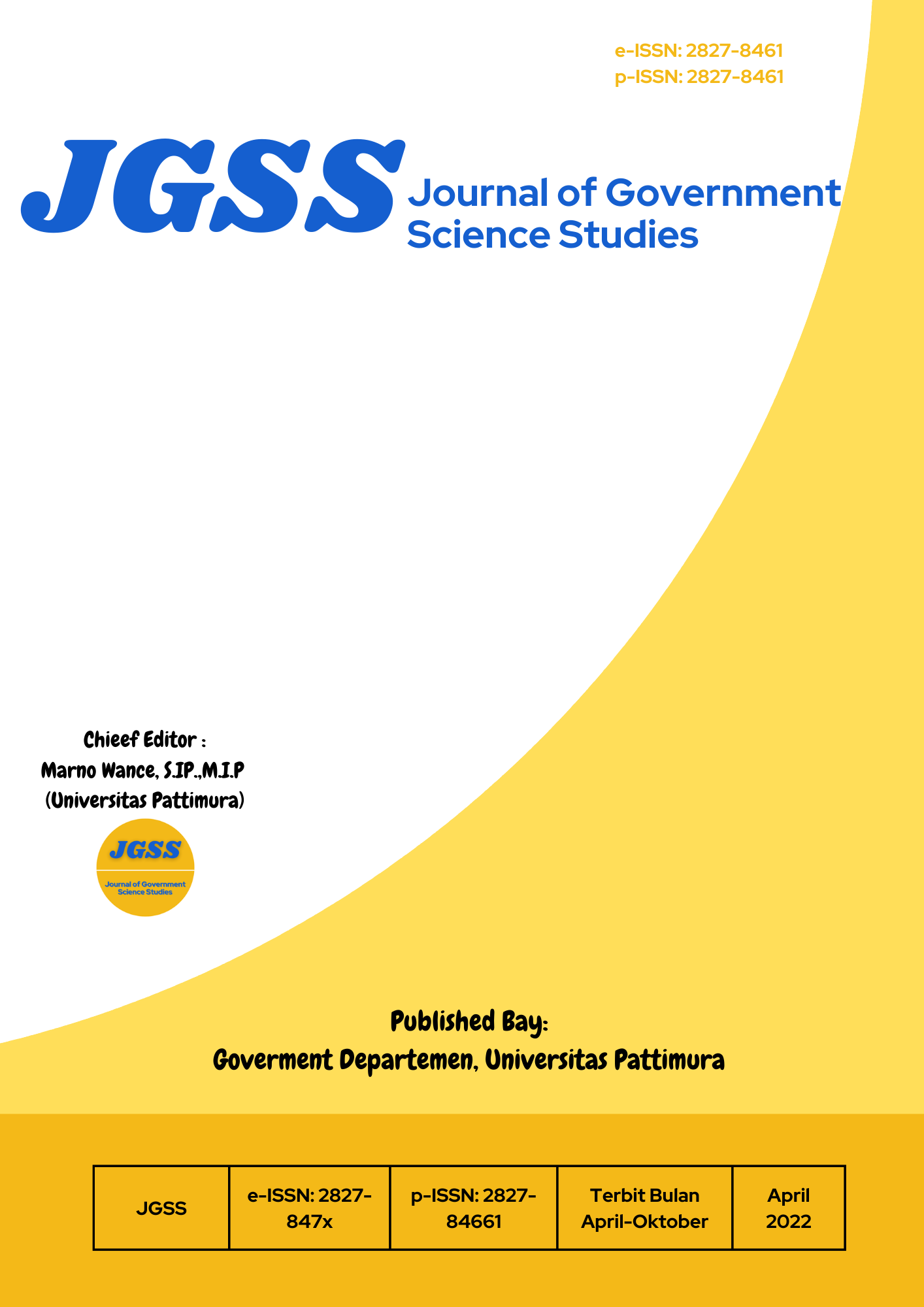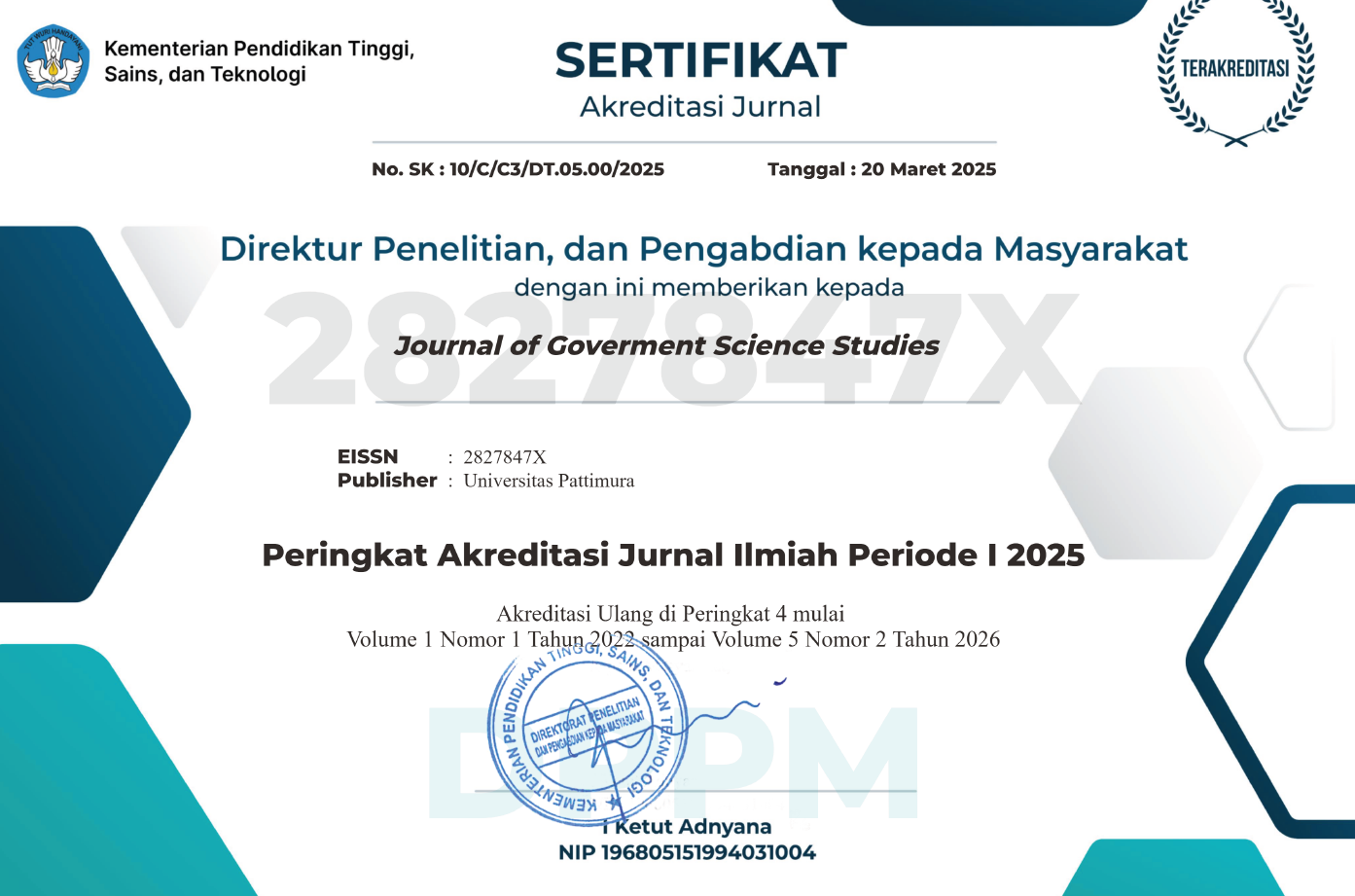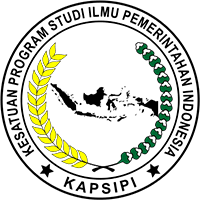Optimizing Stunting Prevention and Handling Programs in Sinjai Regency
Abstract
The problem of stunting is still a serious challenge in public health development in Indonesia, especially in areas with high prevalence such as Sinjai Regency. This study aims to evaluate the implementation of stunting prevention and handling programs comprehensively, including the effectiveness of regional policies, inter-sector coordination, community participation, and the impact of the COVID-19 pandemic on the sustainability of the program. This study uses a qualitative approach with a case study design, supported by descriptive quantitative data through surveys and hypothesis tests on 5 key variables of the program.
The results of the study show that the implementation of the program still faces various challenges. Qualitative findings show weak cross-sector coordination, low understanding of Regent Regulation No. 40 of 2021 regulations at the implementing level, limited training for posyandu cadres, and suboptimal child growth monitoring system. In addition, the survey results showed that public perception of program effectiveness was highest in the aspects of community participation (82%) and OPD coordination (78%), while cadre training (58%) and regulatory understanding (60%) obtained lower effectiveness scores. This shows the inequality between policy design and the reality of implementation on the ground. The impact of the COVID-19 pandemic has also been proven to worsen access to basic services, reduce exclusive breastfeeding coverage, and increase the risk of stunting in vulnerable groups. This study concludes that the optimization of stunting programs must be carried out through strengthening coordination across OPDs, integrating information systems, revitalizing cadre training, and active involvement of community leaders. A participatory approach based on local socio-cultural has proven to be effective in increasing public acceptance of government programs. The novelty of this research lies in an integrative approach that brings together policy evaluation, technical implementation, and social dynamics of the community in one analysis framework based on local context. These results are expected to be a reference in the formulation of stunting policies that are more adaptive and sustainable at the regional level.
Downloads
References
Aheto, J. M. K., & Dagne, G. A. (2021). Geostatistical analysis, web-based mapping, and environmental determinants of under-5 stunting: evidence from the 2014 Ghana Demographic and Health Survey. The Lancet Planetary Health, 5(6), e347–e355. https://doi.org/10.1016/S2542-5196(21)00080-2
Aswi, A., Rahardiantoro, S., Kurnia, A., Sartono, B., Handayani, D., & Cramb, S. (2024). Childhood stunting in Indonesia: assessing the performance of Bayesian spatial conditional autoregressive models. Geospatial Health, 19(2). https://doi.org/10.4081/gh.2024.1321
Bahru, B. A., Jebena, M. G., Birner, R., & Zeller, M. (2020). Impact of Ethiopia’s productive safety net program on household food security and child nutrition: A marginal structural modeling approach. SSM - Population Health, 12. https://doi.org/10.1016/j.ssmph.2020.100660
Elysée, S. Y., Aminata, C., & Donnen, P. (2018). Can blended flour recipes made of locally available and cheap ingredients be used for adequate complementary feeding of infants in rural settings in Burkina Faso? African Journal of Food, Agriculture, Nutrition and Development, 18(1), 13171–13185. https://doi.org/10.18697/ajfand.81.16625
Erhamwilda, E., Afrianti, N., Hakim, A., Dillon, D., & Julia, J. (2024). The effect of healthy food promotion through lunch boxes on the knowledge, attitudes and habits of elementary school students. Humanities and Social Sciences Letters, 12(3), 575–593. https://doi.org/10.18488/73.v12i3.3811
Galasso, E., & Wagstaff, A. (2019). The aggregate income losses from childhood stunting and the returns to a nutrition intervention aimed at reducing stunting. Economics and Human Biology, 34, 225–238. https://doi.org/10.1016/j.ehb.2019.01.010
Garina, L. A., Dewi, M. K., Trusda, S. A. D., Purbaningsih, W., Muflihah, H., Tursina, A., Respati, T., & Rahimah, S. B. (2024). Maternal, Child, and Household Risk Factors for Children with Stunting. Open Public Health Journal, 17. https://doi.org/10.2174/0118749445321448240823112908
Hamzah, M. Z., Sofilda, E., & Kusairi, S. (2025). How do socioeconomic indicators and fiscal decentralization affect stunting? Evidence from Indonesia. International Journal of Development Issues, 24(2), 264–281. https://doi.org/10.1108/IJDI-05-2024-0150
J, K., W, O.-T., A, S., & Gichohi-Wainaina, W. N. (2024). MULTISECTORAL APPROACHES FOR SUSTAINABLE FOOD AND NUTRITION SECURITY ACTIONS IN ETHIOPIA. African Journal of Food, Agriculture, Nutrition and Development, 24(5), 26351–26376. https://doi.org/10.18697/ajfand.130.24180
Kumar, R., & Lakhtakia, S. (2021). Women’ Empowerment and Child Stunting in India: An Investigation. Journal of Population and Social Studies, 29, 47–66. https://doi.org/10.25133/JPSSv292021.004
Laksono, A. D., Wulandari, R. D., Susianti, N., Samsudin, M., & Musoddaq, M. A. (2024). Stunting Among Wealthy Indonesian Families: A Cross-Sectional Study of Children Under the Age of Two. Journal of Population and Social Studies, 32, 384–398. https://doi.org/10.25133/JPSSv322024.023
Narayan, S. (2021). Time for Universal Public Distribution System: Food Mountains and Pandemic Hunger in India. Indian Journal of Human Development, 15(3), 503–514. https://doi.org/10.1177/09737030211049007
Ningsih, A. D., Yuswatiningsih, E., & Prasetyaningati, D. (2024). Exploring the relationship between maternal parenting styles and stunting prevention behaviors in children aged 3-5 years. Healthcare in Low-Resource Settings, 12(3). https://doi.org/10.4081/hls.2024.12054
Putri, P. M., Shafira, A. S., & Mahardhika, G. S. (2024). STUNTING REDUCTION STRATEGY IN INDONESIA: MATERNAL KNOWLEDGE ASPECTS. Indonesian Journal of Public Health, 19(2), 329–343. https://doi.org/10.20473/ijph.v19i2.2024.329-343
Rosalia, F., Kartika, T., Wulandari, J., & Maydiantoro, A. (2022). A Network of Twitter User on Stunting Issue in Lampung, Indonesia. WSEAS Transactions on Environment and Development, 18, 1259–1266. https://doi.org/10.37394/232015.2022.18.118
Suryadinata, R. V, Wijono, H., Sanwersko, F. V. P., Susanto, Y. E., & Lorensia, A. (2024). The comparison of carbohydrates, fibers, and immunoglobulin-A levels in feces against stunting children in Tuban Regency. Healthcare in Low-Resource Settings, 12(s1). https://doi.org/10.4081/hls.2024.13042
Uwiringiyimana, V., Veldkamp, A., & Amer, S. (2019). Stunting spatial pattern in rwanda: An examination of the demographic, socio-economic and environmental determinants. Geospatial Health, 14(2), 329–339. https://doi.org/10.4081/gh.2019.820
Yuhan, R. J., Kutanegara, P. M., & Budiani, S. R. (2024). Linkages of Mother’s Status and Autonomy in the Household With Childhood Stunting in Indonesia. Journal of Population and Social Studies, 32, 416–430. https://doi.org/10.25133/JPSSv322024.025
Copyright (c) 2025 Syamsuddin Syamsuddin, Adi Nawir, Rini Nurul Aini

This work is licensed under a Creative Commons Attribution-ShareAlike 4.0 International License.








.png)





